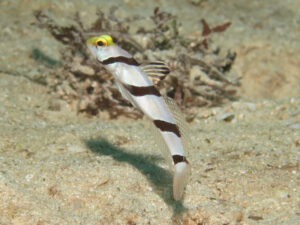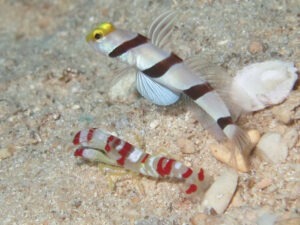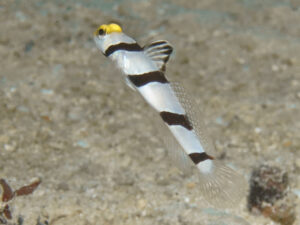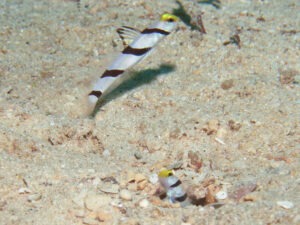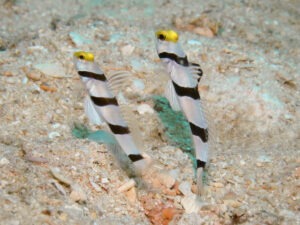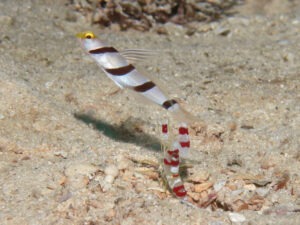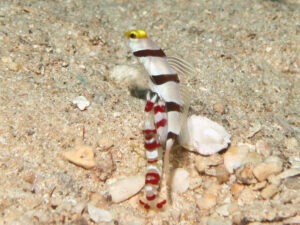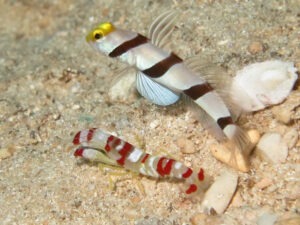Yellowface Shrimpgoby
Stonogobiops xanthorhinica
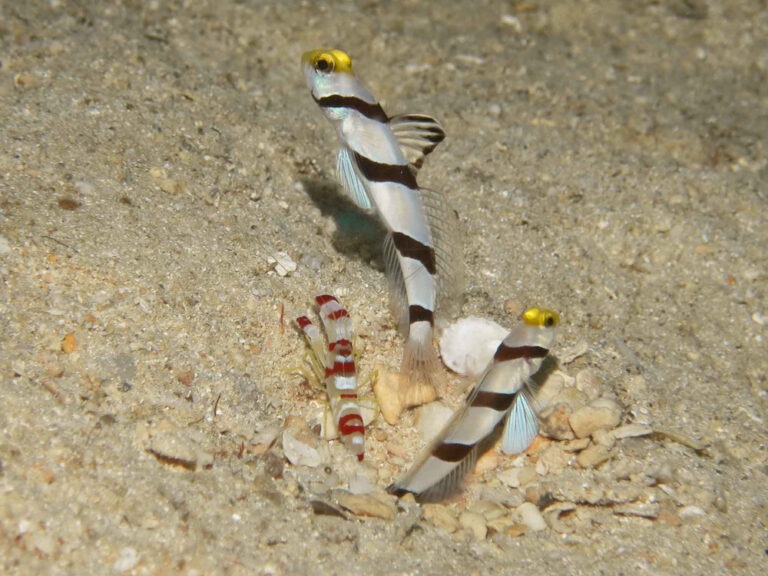
Yellowface Shrimpgoby
Stonogobiops xanthorhinca
Hoese and Randall, 1982
Description
Body design
This is a medium-sized goby (6 cm), white with four well-defined diagonal black bars. The uniformly white body has a general blue reflectivity, most marked on the gill cover and the pelvic fin
The nose and upper part of the eye surround is yellow.
Fin design
The pelvic fin is reflective blue. The other fins are translucent and unmarked except for the dorsal fin. This comes in two forms, either long and plain grey, or more triangular and opaque grey with black accentuation of the spines and border. This may be a sexual difference. The second dorsal fin is faintly marked with rows of white spots between the spines. The caudal fin can have a similar appearance.
Diagnostic features
The yellow nose and white body with black bars and triangular dorsal fin make identification easy.
Similar species
Other species of Stonogobiops. Differentiated by dorsal fin shape.
Habitat
Depth range of 3 to 45 metres. We have seen these pairs in fairly deep conditions on flat white sand at 18 m, with strong current at times.
Behaviour
These gobies characteristically hover up to 30 cm above the burrow. This may suit them but it puts them out of reach of their partner gobies which are very reluctant to leave the burrow when they are unable to maintain antenna contact contact.
The shrimps deal with the situation by stretching up and grabbing the goby by its tail and hauling it down to ground level when it starts to hover.
If the fish attempts to return to the water column while the shrimps are working they are quite capable of giving it a severe nip,
We have a video of one of these shrimpgobies catching a morsel of vegetation from the current and taking it down to the shrimps at the burrow entrance.
Distribution
Published distribution
East Indian region to Palau and Fiji, and Australia (northern Great Barrier Reef) to Japan. Indonesia, Philippines, Papua New Guinea and Solomon Islands. (AE)
Our records
Australia; Lizard Island
Solomon Islands; Gizo Harbour, Russell Islands.
Associated Shrimp species
Associated Shrimp (one shrimp)
Randall’s Snapping Shrimp, Alpheus randalli
It has also been recorded with the Tiger Shrimp Alpheus bellulus in Japan

